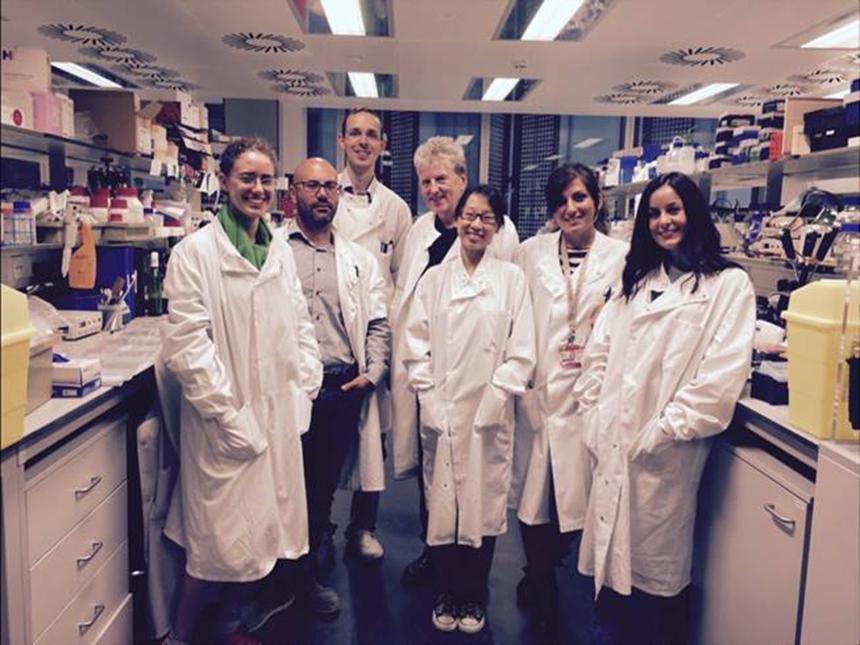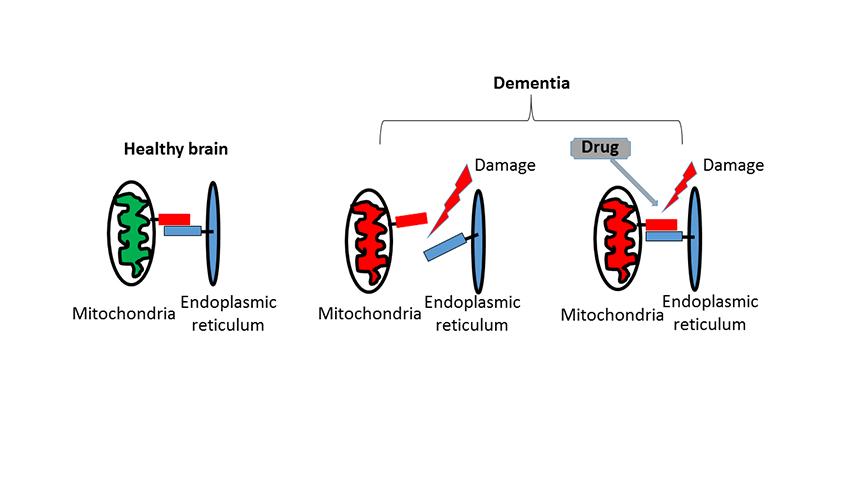Missed connections
We look at how a repurposed drug could fix lost connections in frontotemporal dementia (FTD).
People often describe mitochondria as being like the ‘powerhouse of the cell’. They are the tiny jellybean-like organs that sit inside a cell that make energy from the nutrients your body takes in and sends this energy out for the rest of the cell to use.
The endoplasmic reticulum is another important part of a cell, as it makes the proteins and fats that the cell uses to work properly. To do this it must have energy, and this is where the mitochondria comes in, sending it packages of energy so that it can keep making proteins.
Frontotemporal dementia (FTD) is a form of dementia that causes symptoms including problems with language or changes in behaviour and personality. There are currently no treatments available for FTD.
Professor Miller, Dr Patricia Gomez-Suaga and PhD student Naomi Hartopp are studying the relationship between mitochondria and the endoplasmic reticulum. They have found that normally these two parts of the cell stay in close contact with each other, tied to each other by chemical connections. However, they noticed that in conditions such as FTD these connections are often broken.

Professor Miller and colleagues became interested in a drug that is already approved for use in liver conditions. Their work is now testing whether this drug can repair broken connections between the mitochondria and endoplasmic reticulum within brain cells. They believe that repairing these connections could allow them to work together once more. In the case of FTD, brain cells may then be able to recover and function properly. The researchers are optimistic that this treatment could be used in other dementias.
This research is still in its very earliest stages. At the moment the chemical is being tested on brain cells grown in a dish in the lab, so it is still years from being tested in humans. That said, by focusing on an existing drug that we already know to be safe, this research is on a faster track to a potential treatment. Repurposing drugs in this way is a key aspect of our Drug Discovery programme.
Dr Gomez-Suaga said of the work
‘This is now a very hot topic in scientific research. It has implications for dementia treatment and pharmaceutical companies are displaying interest in this field. We have made a major discovery by identifying some of the connecting proteins involved and our findings are enhancing drug discovery in this field.’
The diagram below shows a a healthy mitochondria and endoplasmic reticulum with a connection between them in a healthy brain on the left. On the right we can see how damage in dementia causes the connection to break and how the drug treatment repairs the connection.


